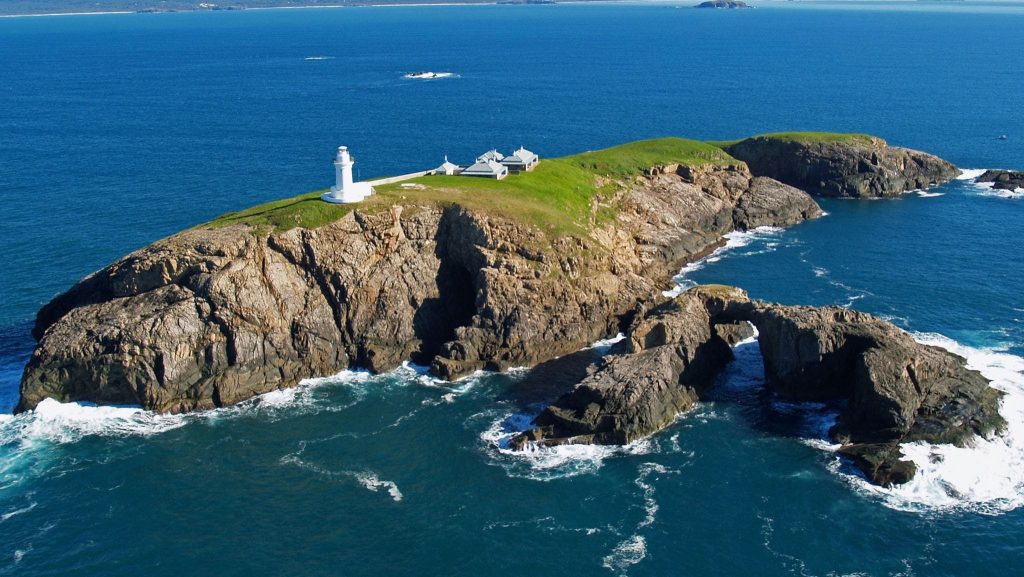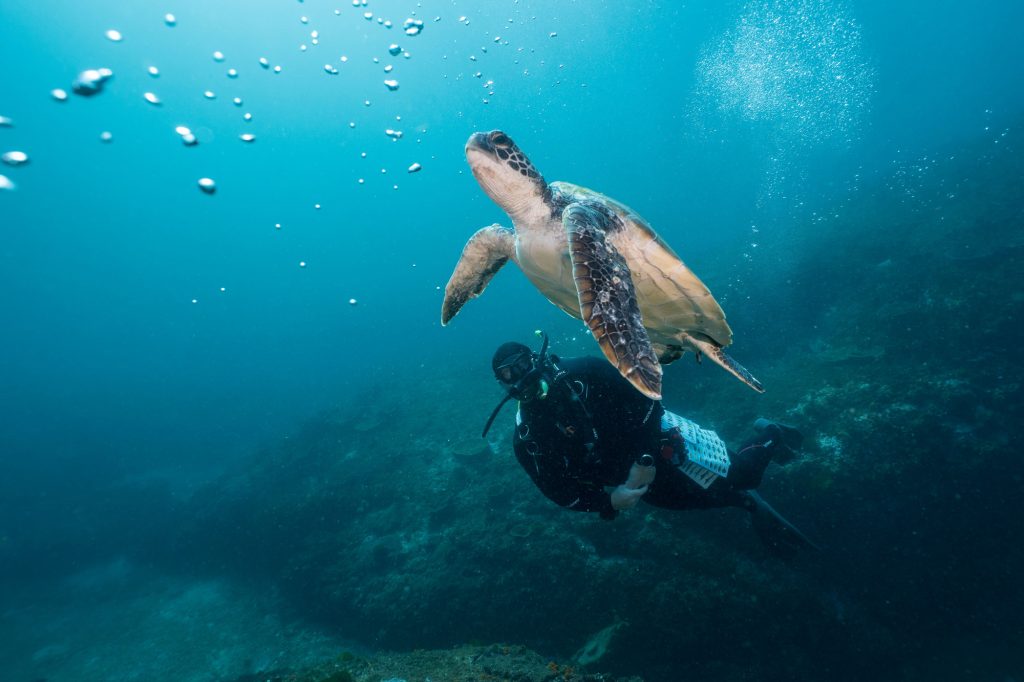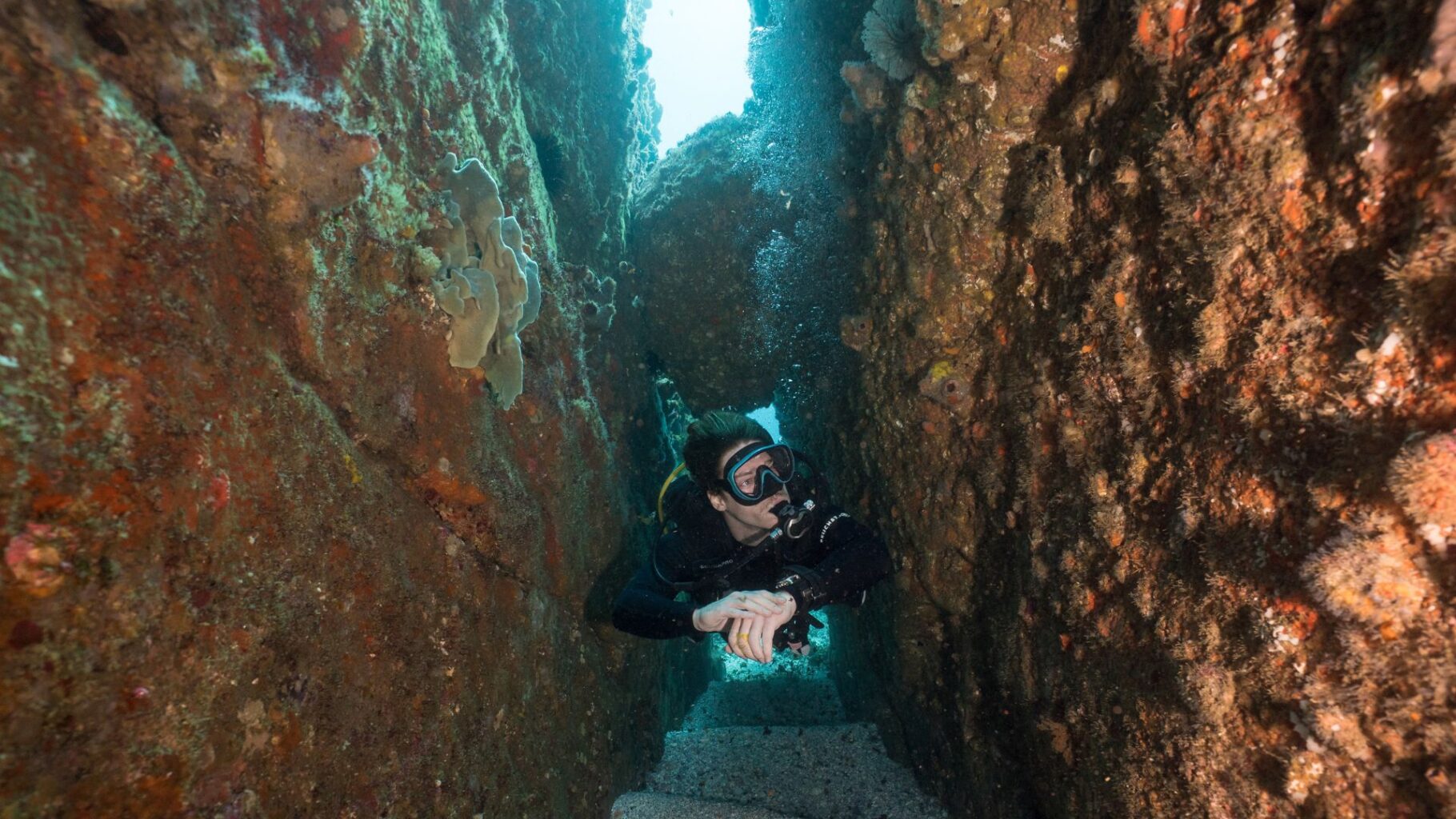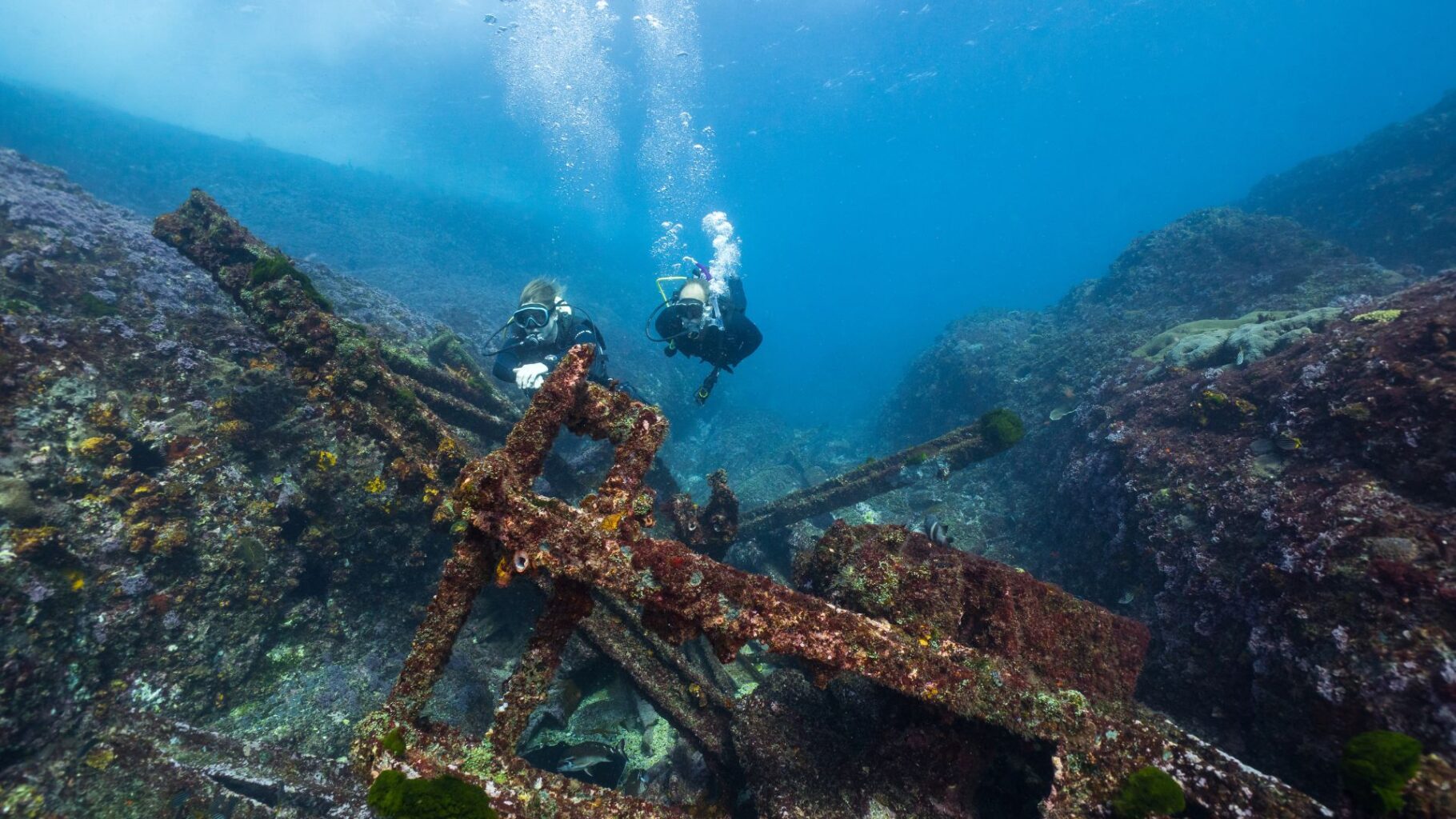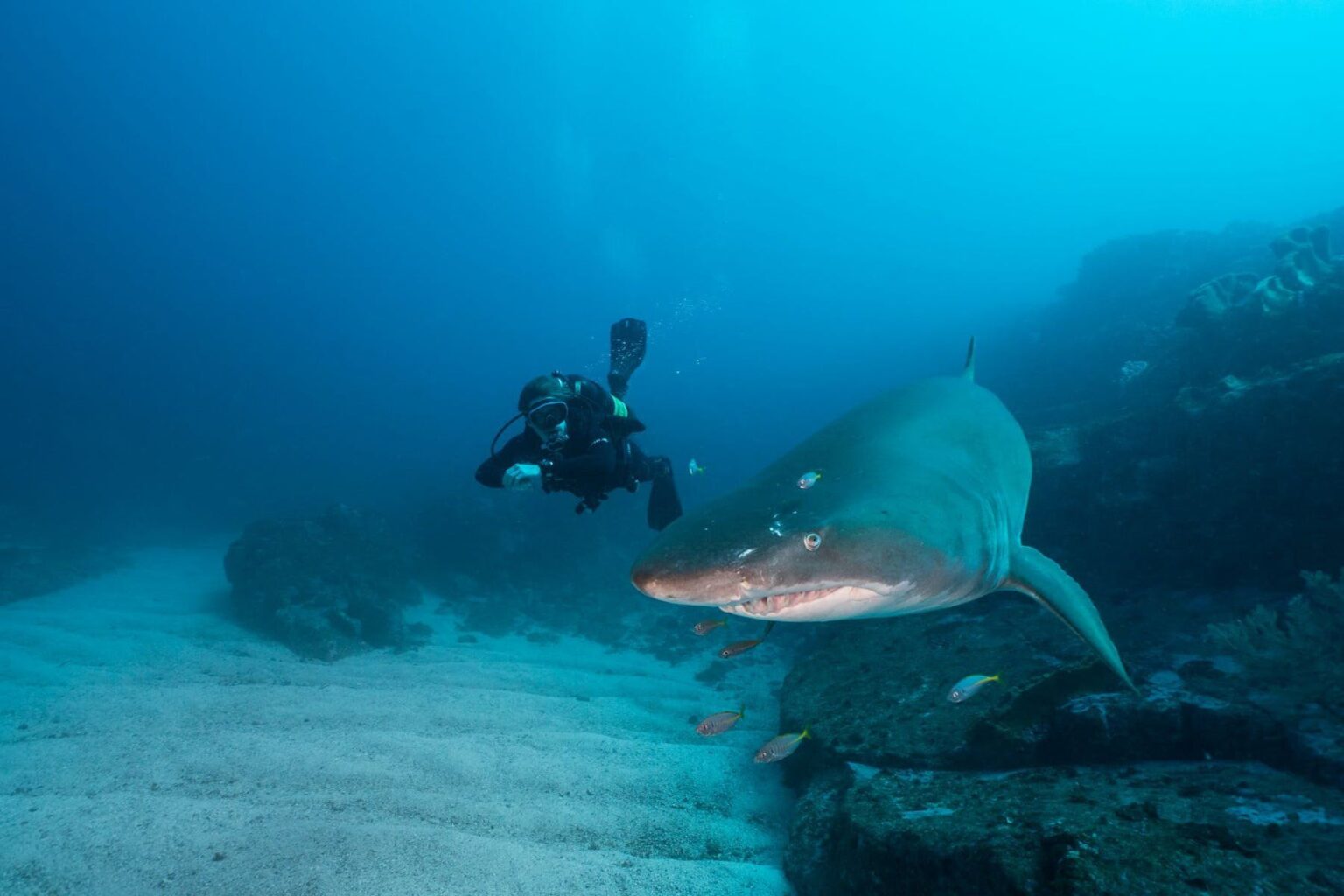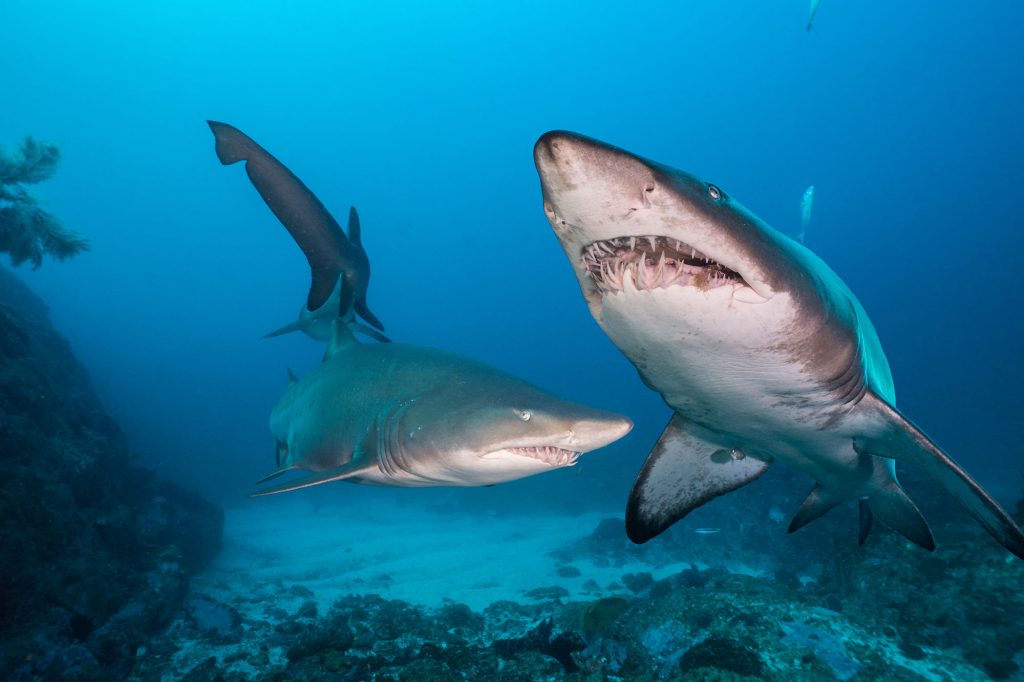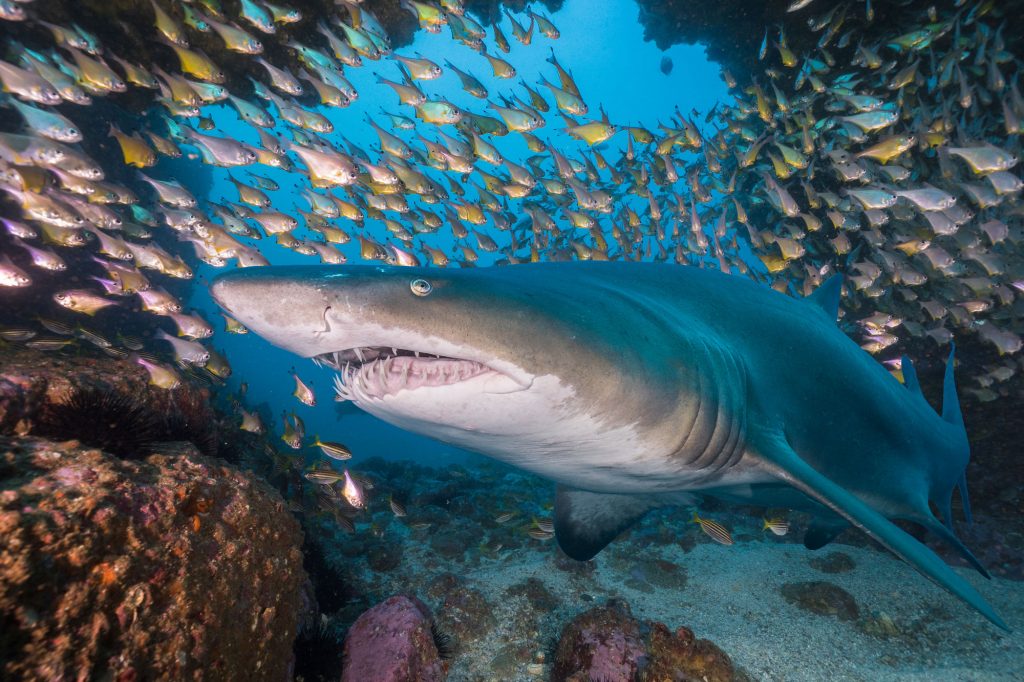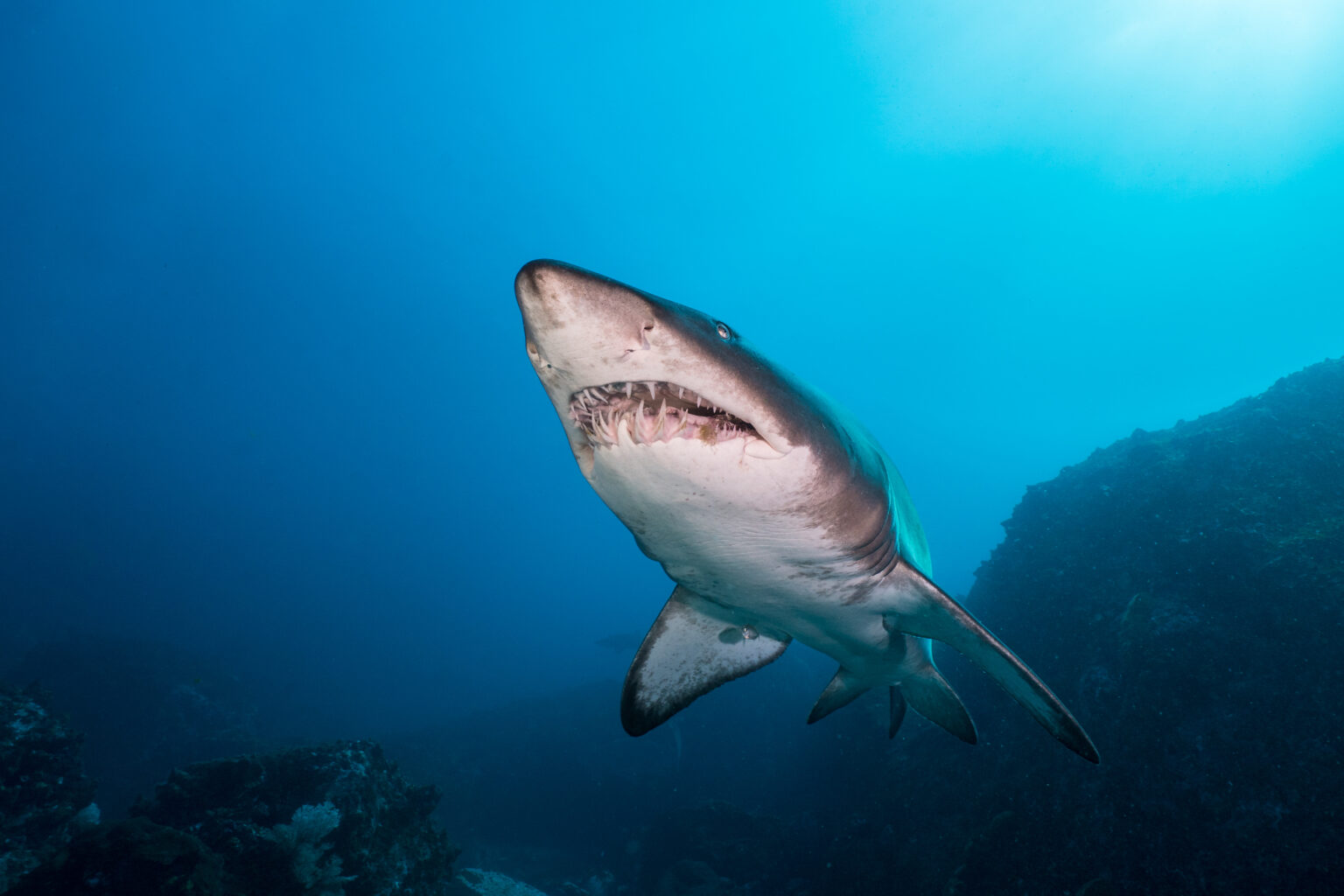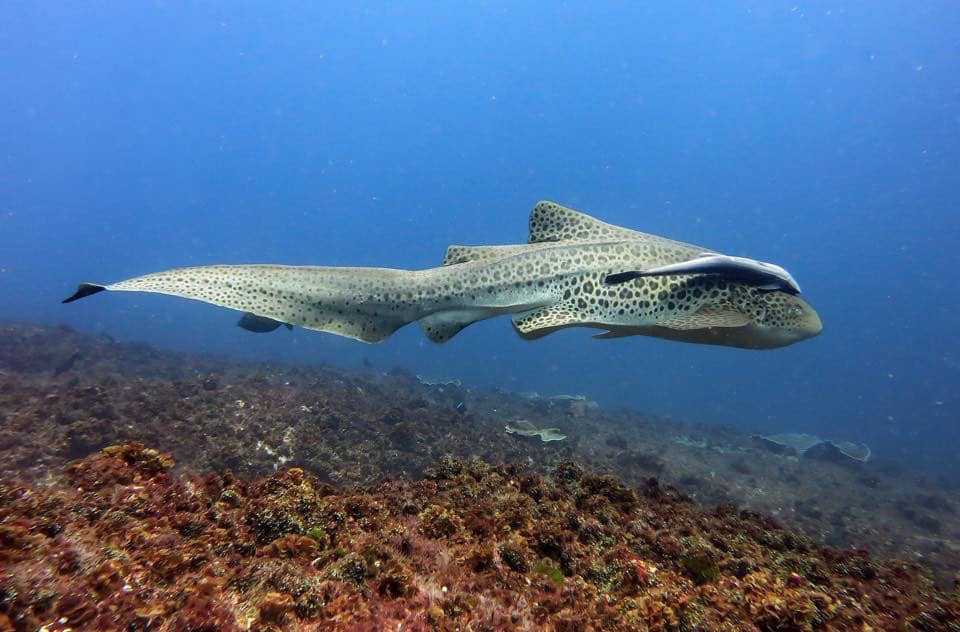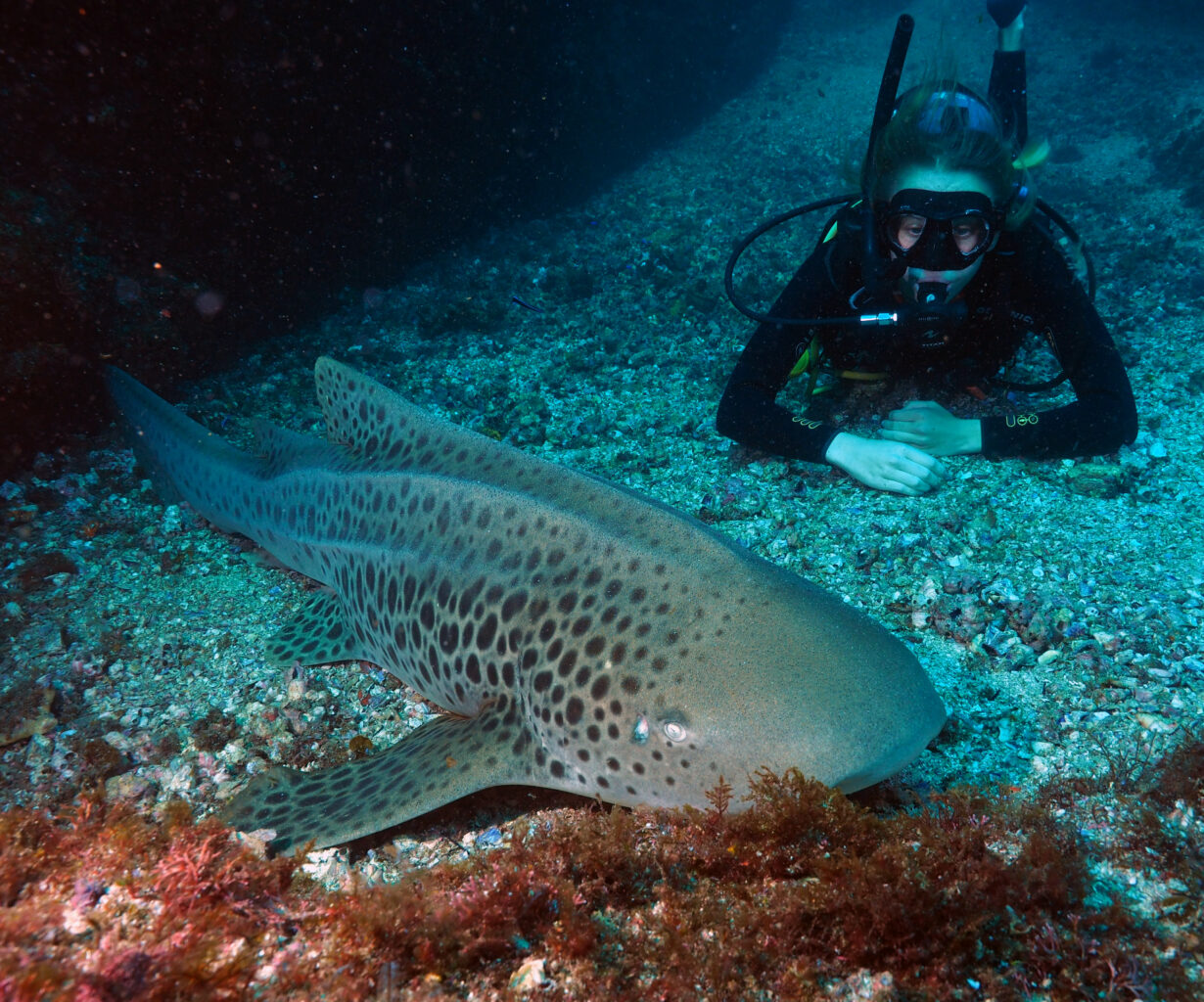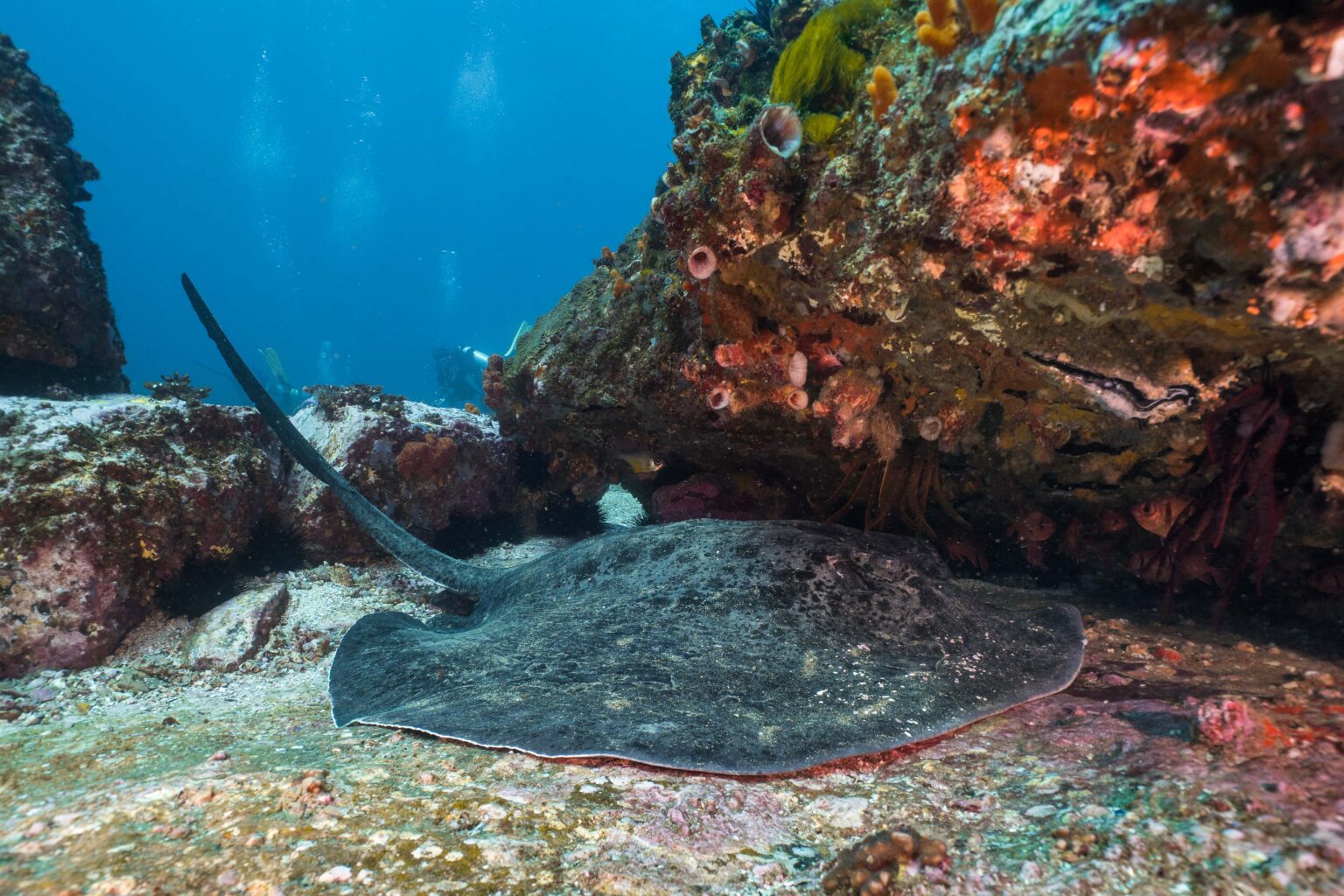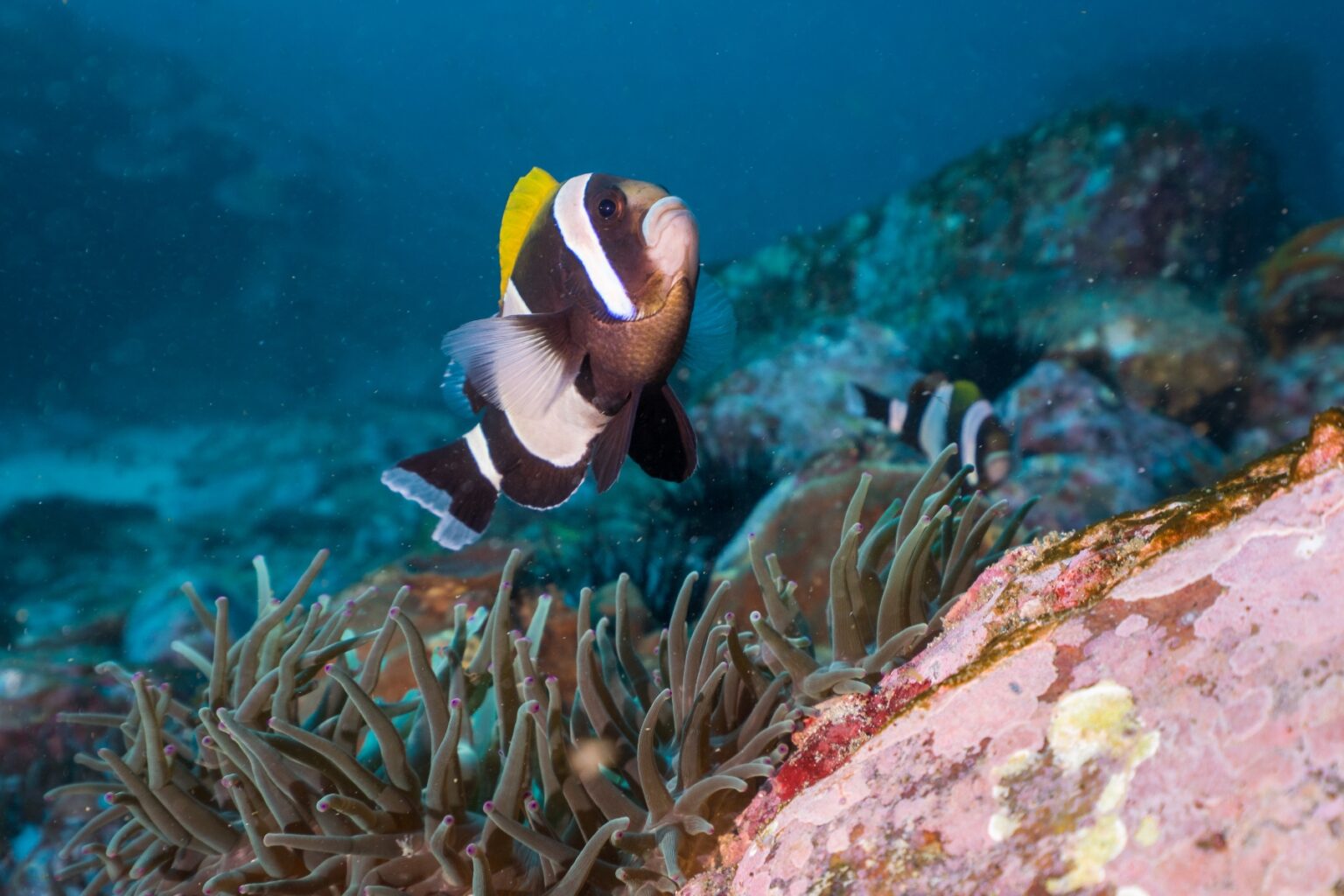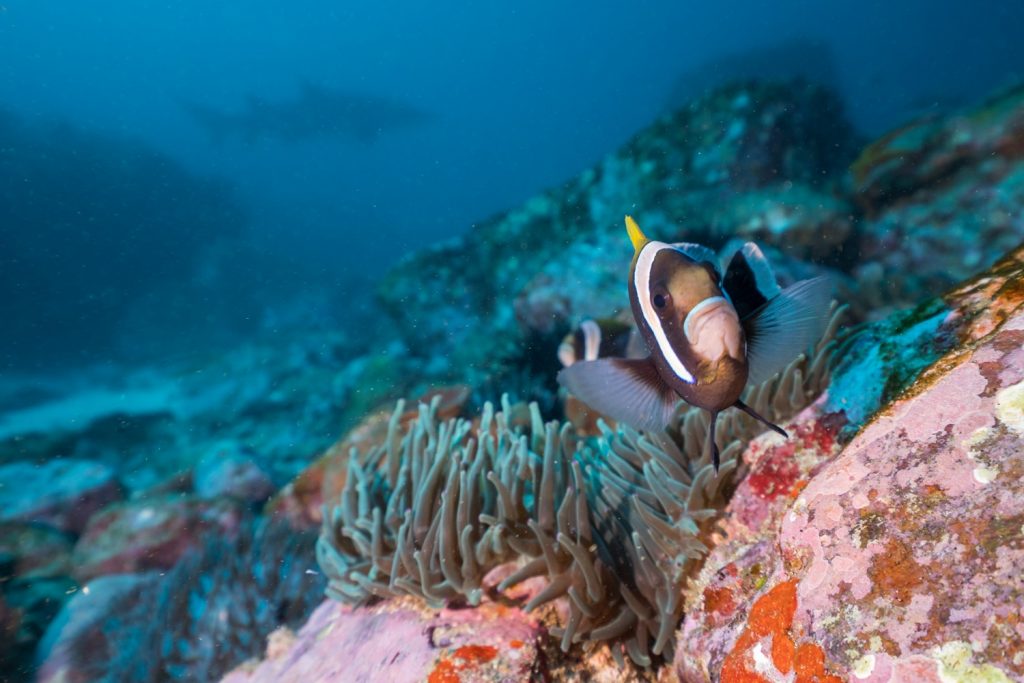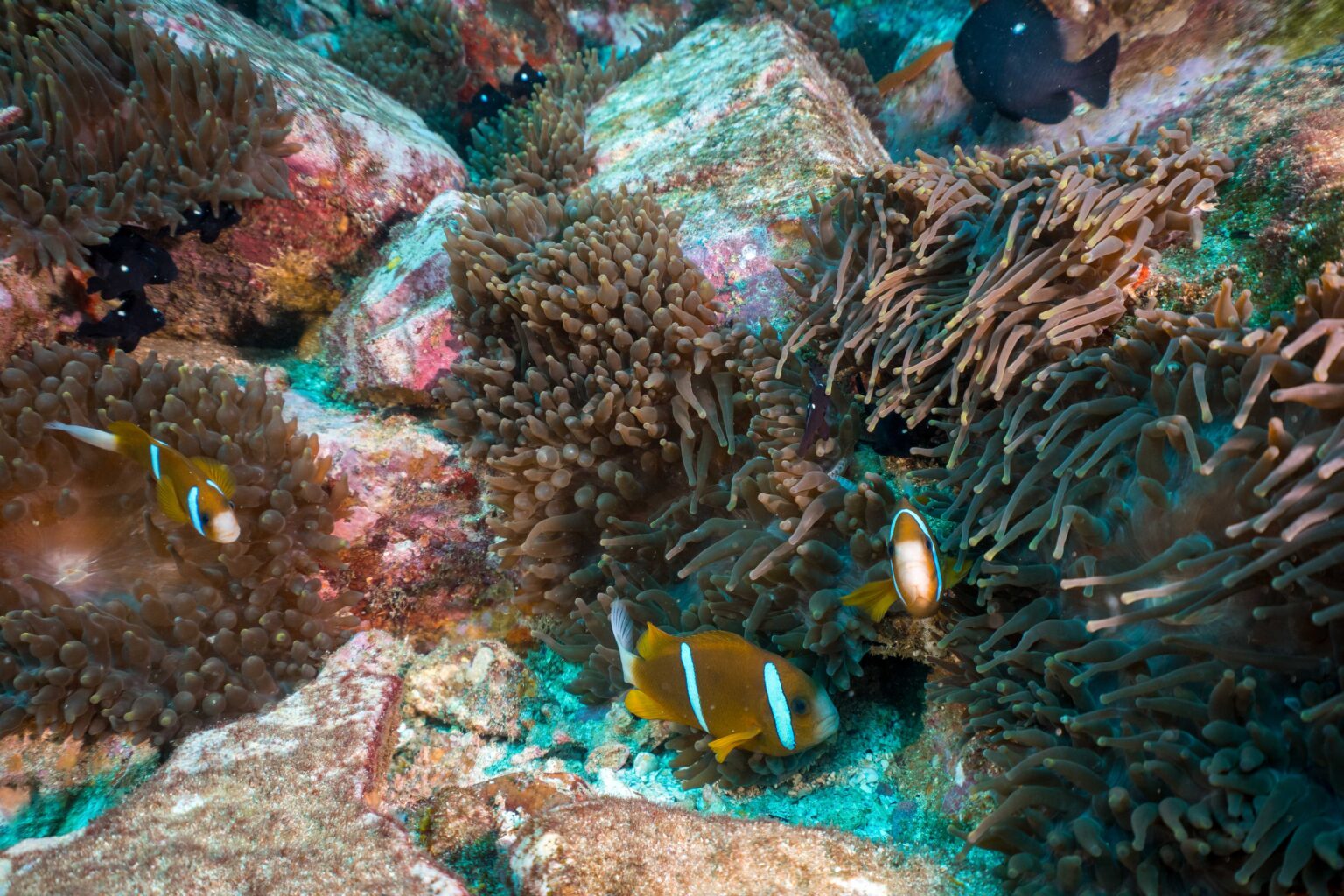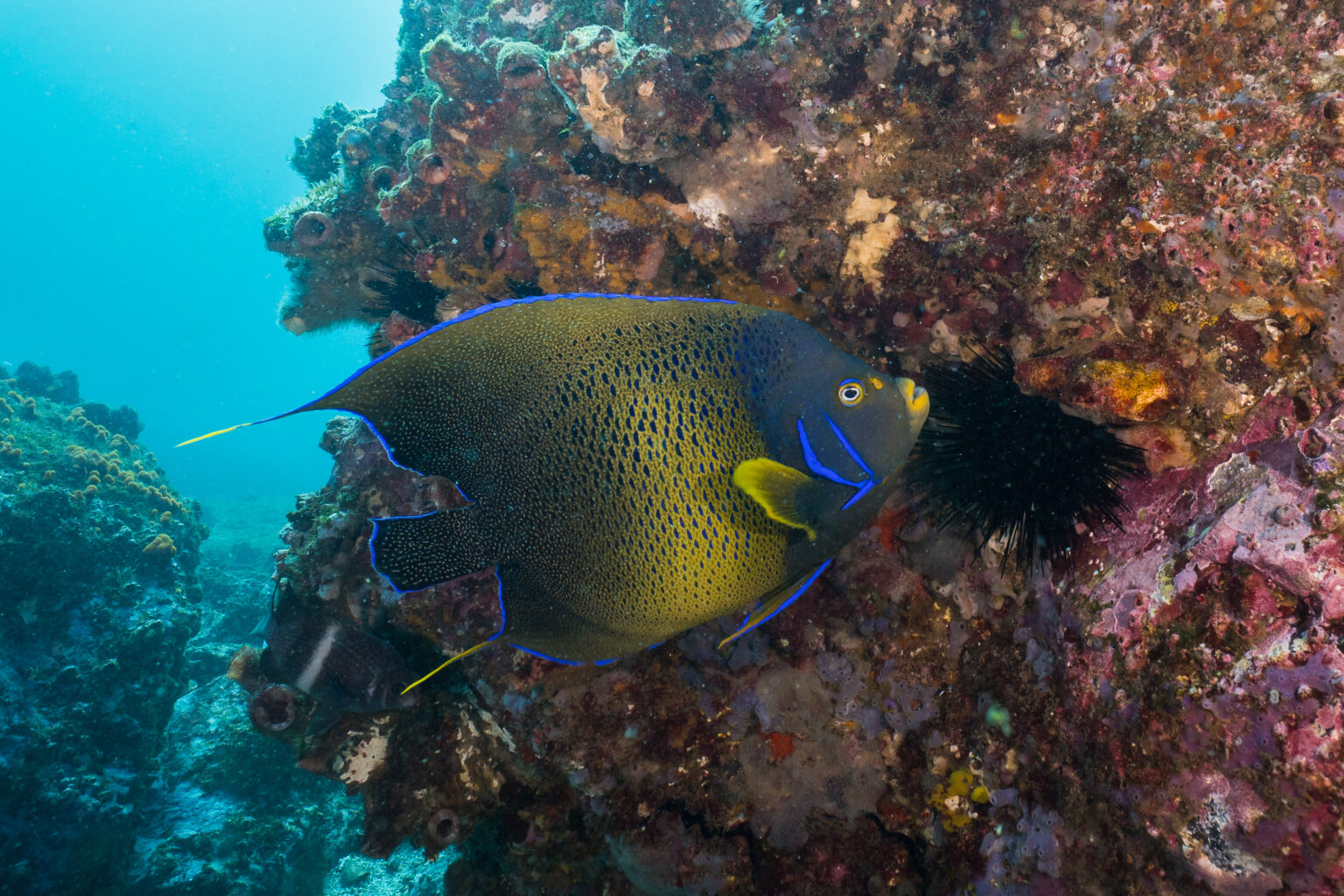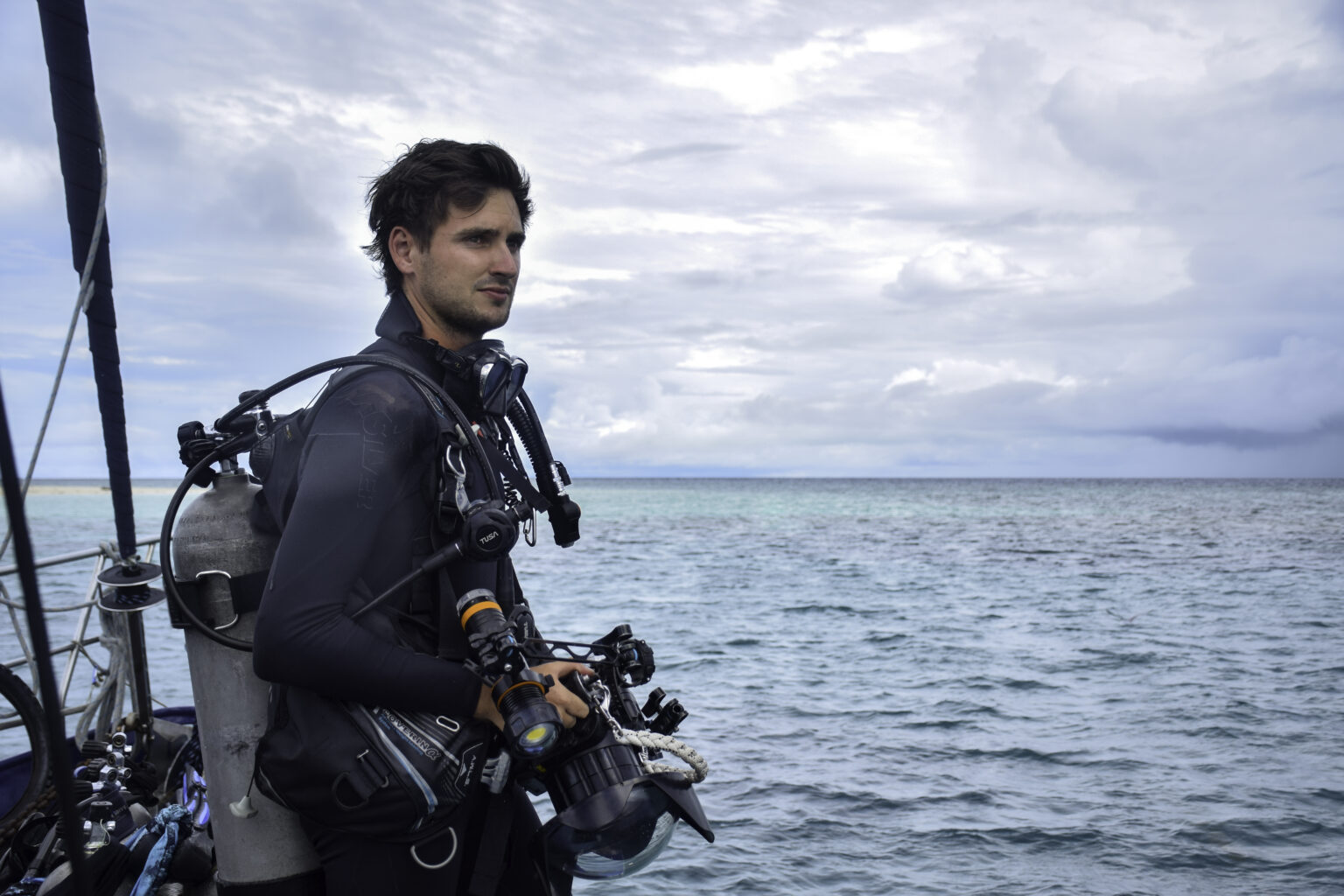The Solitary Islands Marine Park is NSW’s oldest marine park… and it’s just off the Coffs Coast coastline, waiting for you to explore.
Story and images by Tom Park, underwater film-maker for PADI TV
The five uninhabited islands in the Solitary Islands Marine Park act as a meeting point between the nutrient-rich temperate waters from the south and the warmer tropical waters flowing down the East Coast. This mixture allows tropical and temperate water species to coexist in the same area resulting in some of the most diverse marine life in the country.
On a single dive, divers may experience numerous turtles, a variety of Anemone Fish, groups of Blue Tang (popularly known as Dory), Manta Rays and their more temperate counterparts Bull Rays. Schools of Grey Nurse Sharks add to the experience while swimming over a range of hard and soft corals with areas of up to 100% coral coverage.
In the summer months, schooling Leopard and Hammerhead Sharks migrate to the island, providing a backdrop unlike any other on the coast. One dive here, and you could tick off a big chunk of your diving bucket list. If this isn’t enough, we also came across a few breaching whales and had dolphins bow-riding our boat on the way out to the islands.
The sheer range of marine life here is simply staggering, but the Solitary Island Marine Park it’s not just one dive site. Covering a whopping 152 square kilometers area, each of the five islands is spread out in such a way that each of the dive sites is remarkably different, each with its own pull.

For those seeking epic shark diving, South Solitary Island is a must-dive with year-round Grey Nurse Shark action. During peak season, between June and late August, divers will struggle to find blue water amidst the sea of grey as hordes of Grey Nurse Sharks cover the water column as far as the eye can see. With over 100 3-4 meter long sharks in vision, it’s truly some of Australia’s most adrenaline-fuelled diving. While diving with these sharks is best over peak season, there is a year-round resident population of these animals that do not migrate between seasons. Divers visiting the Solitary Islands later in the year will still see schools of up to 30-35 Grey Nurse Sharks.
By all accounts, Grey Nurse Sharks tend to be non-aggressive towards humans, despite their forward-facing teeth, fierce appearance and size. Swimming with these sharks can actually be incredibly relaxing once you mentally get over the fact that you’re surrounded by a school of 4-meter-long sharks. Grey Nurse Sharks are a perfect way to dip your toe into shark diving as they tend to be extremely docile with lethargic behaviour.
While the number of Grey Nurse Sharks taper off in the warmer months, by no means is diving out of Coffs Harbour a winter-only activity. The warmer water brings in another spectacular species, Leopard Sharks. Leopard Sharks are typically a more tropical species and similar to the Grey Nurse Shark population. Large schools of these majestic animals migrate to both South and North Solitary Islands over the February to April period. Divers are provided with a rare opportunity to swim with masses of these vibrant leopard print sharks. Manta Rays also start appearing and are commonly seen at North Solitary Island, with notably regular encounters at North West Solitary Island.
The Solitary Islands Marine Park is a must for anyone seeking variety, seclusion, wildlife encounters and marine life on your next dive. Get your diving bucket list out and call your dive buddy and start ticking off the unforgettable experiences available underwater in the Solitary Islands Marine Park.
In addition to Leopard Sharks and Manta Rays, North Solitary Island has an ace up its sleeve. North Solitary Island holds the record for the largest density of Anemone Fish in the Southern Hemisphere, its most notable dive feature. Throughout November to December, schooling Hammerhead Sharks appear out of the depths and glide past the islands, something many people almost exclusively associate with the Galapagos. The prospect of seeing even a singular Hammerhead in NSW is enough to make me want to return!
The team at Jetty Dive Centre are the experts when it comes to diving or snorkelling on the Coffs Coast. You can also complete your PADI dive certification with them and kit yourself out with the latest gear from their extensive range.
About Tom Park
At age 13, I completed my first-ever intro dive with my father. We saw Nemo and a bunch of fish, but best of all, we felt a sense of total weightlessness and immediately. Naturally, I bought a GoPro and started my dive training.
At 18, I started my PADI Dive Master training allowing me to work in the industry. The goal here was to score a few free holidays volunteering onboard diving vessels in the coral sea. I saved enough money to purchase my first real UW camera. Hilariously, before it even arrived, I landed a job as a professional underwater photographer on a dive boat over my uni breaks. This was the start of my photography career. I had some great photos, community building and hours to hone my skills.
At 24, I left my job as a corporate lawyer to become a full-time underwater filmmaker. Now four years later, I’m representing PADI TV – it’s an absolute honour!
